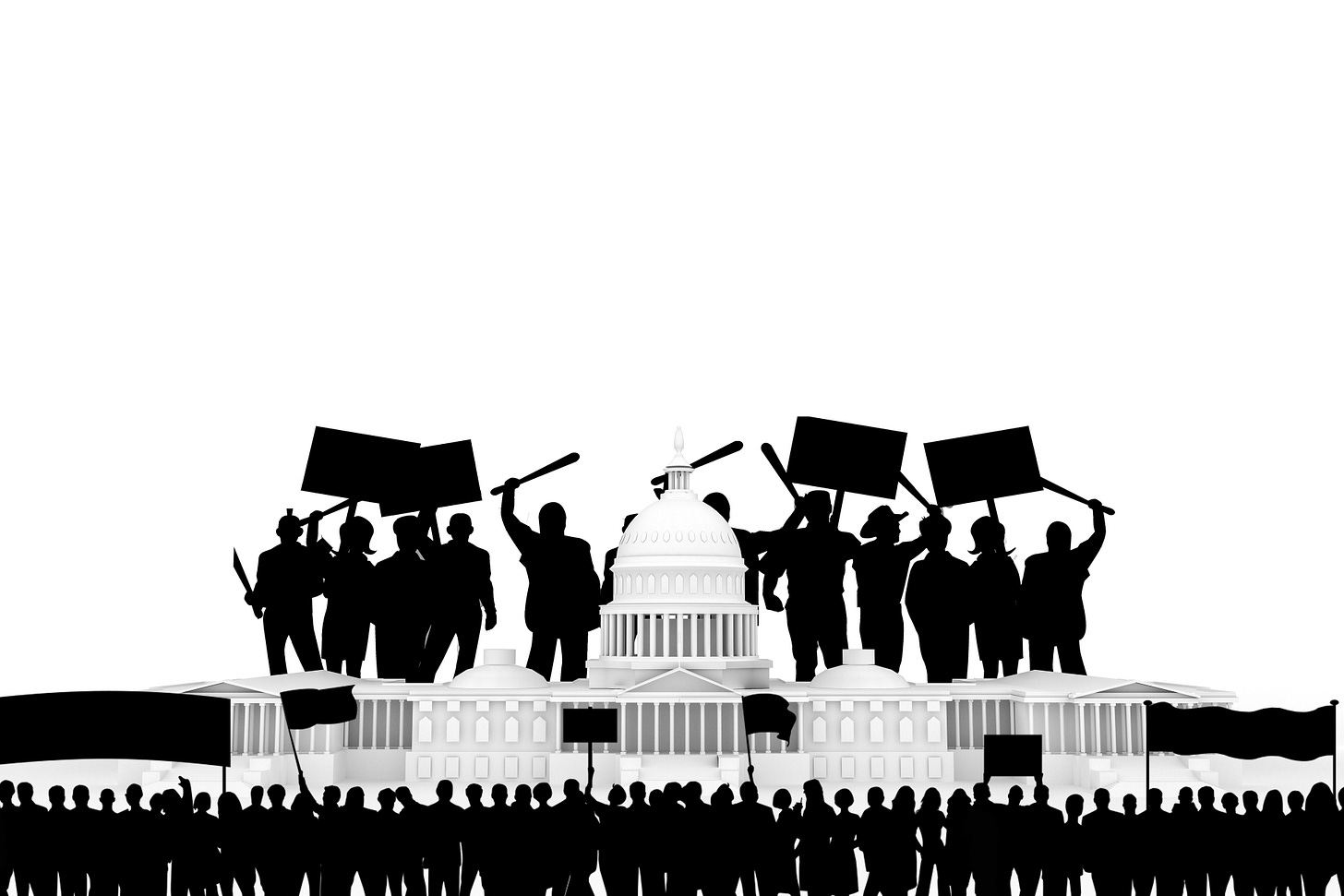Since the riot at the Capitol, the Democrats and their allies in the media and across Big Tech have turned January 6 into the country’s newest day of infamy. The “insurrection” has been cast as a major turning point in American history—the day when the forces of opposition to democratic norms broke loose and, egged on by an illegitimate, lying president, attempted a bloody coup that aimed to overthrow the government and install Trump as our forever leader, in the model of his hero and controller, Vladimir Putin.
In understanding this seminal moment, which has resulted in the full military occupation of Washington, D.C., an unprecedented impeachment of a private citizen, and calls to silence political dissent permanently, it is instructive to look at other failed coups in modern history, if only to get a sense of where we are and may be headed. How have other regimes responded when faced with violent attacks by extremists?
In 1923, Adolf Hitler, inspired by the recent examples of Ataturk and Mussolini, attempted to overthrow the government of Bavaria. He assembled 2,000 Nazis, declared that the government had fallen, and marched on the defense headquarters in an effort to seize it. His group was met by armed soldiers, shooting broke out, and the rebel leadership scattered afterward.
16 Nazis were killed. Hitler was jailed.
In 1961, French generals, opposed to what they saw as President Charles de Gaulle’s perfidy in engaging in peace talks with Algerian rebels, staged a coup against the Fifth Republic. Based in Algeria, the plotters seized control of Algiers with the help of an elite paratroop unit. They planned to invade the French mainland and overthrow the government in order to retain French control of its colonies. In response, de Gaulle donned his World War II uniform and appeared on television and radio, calling upon the military and civilians to back him. Conscripts in Algeria attended to de Gaulle’s call and refused to follow their officers. The army blocked flights into Paris and arrested the local plotters. The attempted coup fell apart.
In 1981, neo-fascist elements among the Spanish Civil Guard—the national police force—stormed the Congress of Deputies during the election of a new prime minister. The putschists took the deputies hostage; meanwhile army elements in Valencia attempted to seize control of the city in support of the Madrid action. King Juan Carlos, whom the plotters had hoped would accept the coup, appeared on television in full military gear and repudiated the coup. The Spanish Air Force threatened to bomb the rebels’ positions. The attempted overthrow fell apart soon after, and Spanish democracy was vindicated six years after the death of Franco.
In 1991, KGB hardliners within the Soviet government attempted to overthrow premier Mikhail Gorbachev in order to roll back his economic and political reforms and re-establish centralized control of the disintegrating Soviet Union. Gorbachev was confined to his vacation home in the Crimea, and the plotters prepared to execute mass arrests in Moscow. Russian civilians barricaded central Moscow, and Boris Yeltsin, president of the Russian Republic, publicly denounced the coup as illegal and reactionary; he famously stood on a tank to signal his readiness to oppose the putsch. The plotters considered a full military attack on the main government offices, but realized that they lacked popular support. They retreated, were arrested, and the Soviet Union truly dissolved soon after.
There are other cases, too, but these are illustrative. What we see in these instances are well-organized plotters with defined leadership which openly sought to seize control of government. In each case, the threat of force was activated to defuse the standoff. In several cases, a major national leader stepped forward to demand that constitutional authority be maintained.
On January 6, on the other hand, a leaderless mob entered the largely unpoliced Capitol building. Once inside, they mostly wandered around taking pictures of themselves. In a few cases, police were filmed asking the participants—attired in animal skins—if they would mind leaving soon. Someone stole Nancy Pelosi’s computer, and other souvenirs were taken. After a few hours, the putschists left the Capitol and went out for drinks.
If the Capitol Hill Insurrection was truly an attempted coup, as the Democrats insist it was, then there should have been a significant and authoritative response that caused it to fail. There ought to have been a military response, or a major political leader ought to have come forward to condemn the coup and rally the country to his side.
In fact, President Trump did tell the rioters to behave peacefully, and could be given credit for his steady and pacific leadership during a moment of crisis—though the opposite narrative has been promulgated. But there was otherwise no real response to what has been cast as a revolutionary, seditious moment.
So why did the January 6 Insurrection fail? The only answer that makes sense is that it wasn’t actually an insurrection or coup at all. Rather it was a kind of raucous and ugly performance that got out of hand, and which a feckless Capitol Police force utterly mismanaged. This was no coup; it was more like a farce.






This articles is very ingenuous--and spot on. If you've never used the word, it means "showing innocent or childlike simplicity and candidness." But it is more than this. It frames the innocence of the majority of those who came to the Capitol that day captured in digital images. What kind of innocence? A little lady with a water bottle sight-seeing; a man dressed in horns and skins, wandering about bellowing with his own photographer; a young woman climbing through a window never expecting to be shot to death trying to make her political voice heard; a policeman in favor of the president and free speech affected by teargas, used to push back protestors, collapsing and dying after getting back to police headquarters; a president who encouraged peaceful, patriotic protest who was never informed by the FBI that plans for violence had been uncovered so that he could direct crowds away from the Capitol.
Yes, ingenuous properly describes the description of the majority of actions on January 6.
"The “insurrection” has been cast as a major turning point in American history—the day when the forces of opposition to democratic norms broke loose and, egged on by an illegitimate, lying president, attempted a bloody coup that aimed to overthrow the government and install Trump as our forever leader, in the model of his hero and controller, Vladimir Putin."
That's a pretty spot on assessment. Not sure how you can be minimizing this.
"an unprecedented impeachment of a private citizen"
It's not unprecedented (William Belknap for example) and he wasn't impeached as a private citizen anyway. It's the conviction that is happening after he left office and is perfectly constitutional.
"and calls to silence political dissent permanently"
This is a description of what conservatives are doing as you already described in your first paragraph.
"How have other regimes responded when faced with violent attacks by extremists?"
No one is arguing that Trump's coup attempt was competent.
In short, today's conservatives are politically and historically illiterate far-leftists that came very close to ending the American republic on the 6th and may yet succeed given the nutters over running the movement.
Articles like this are very disingenuous.